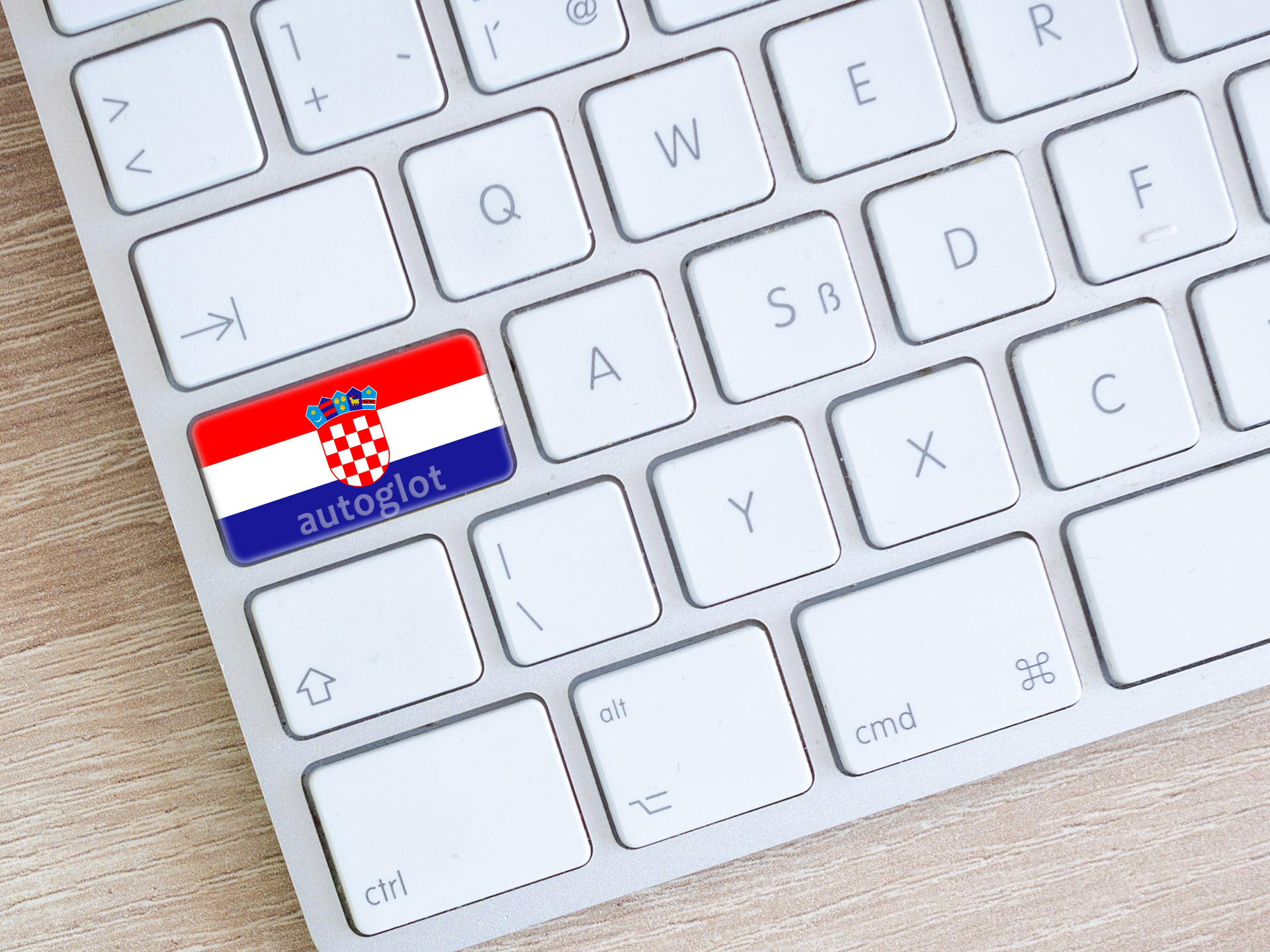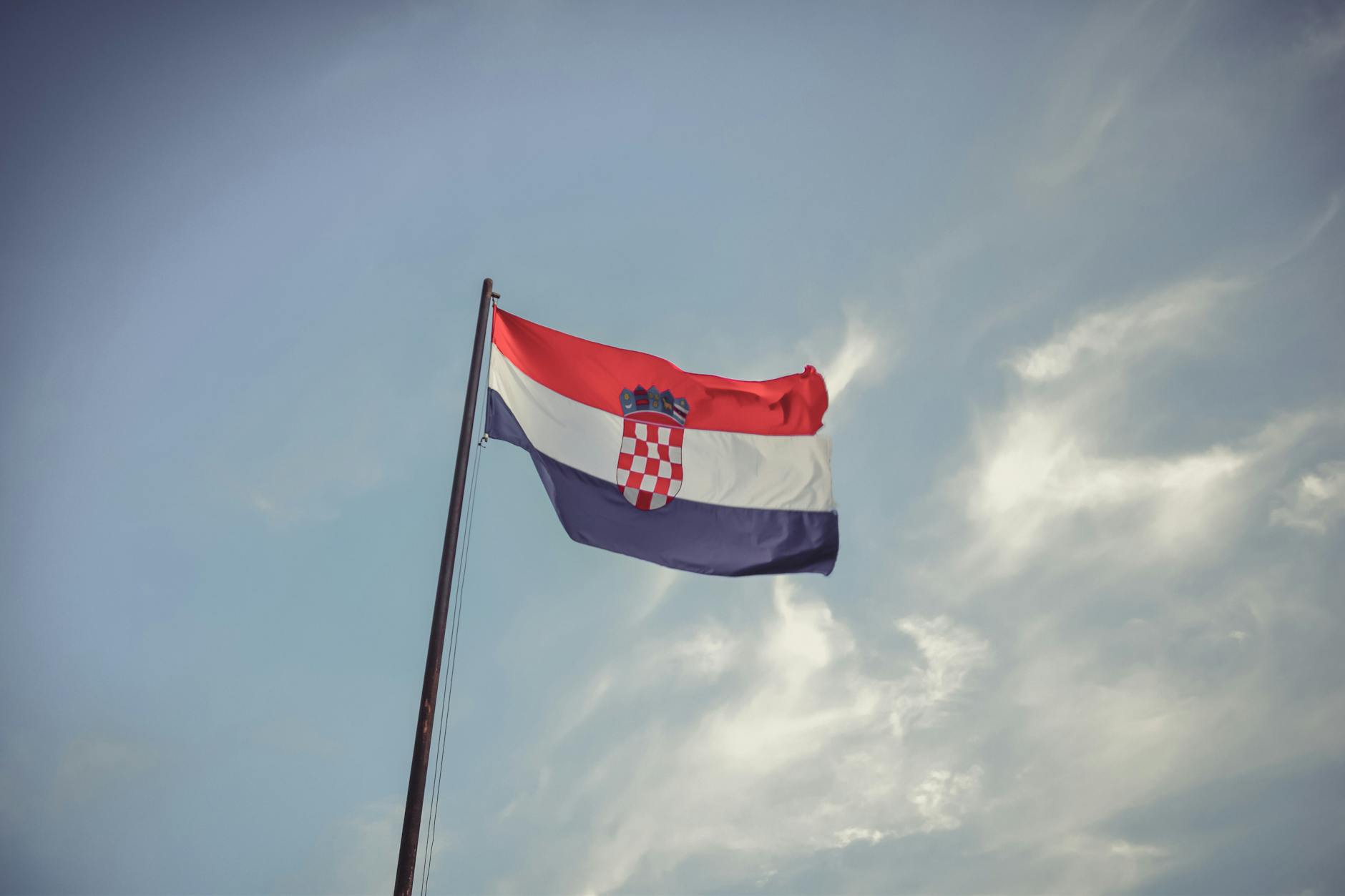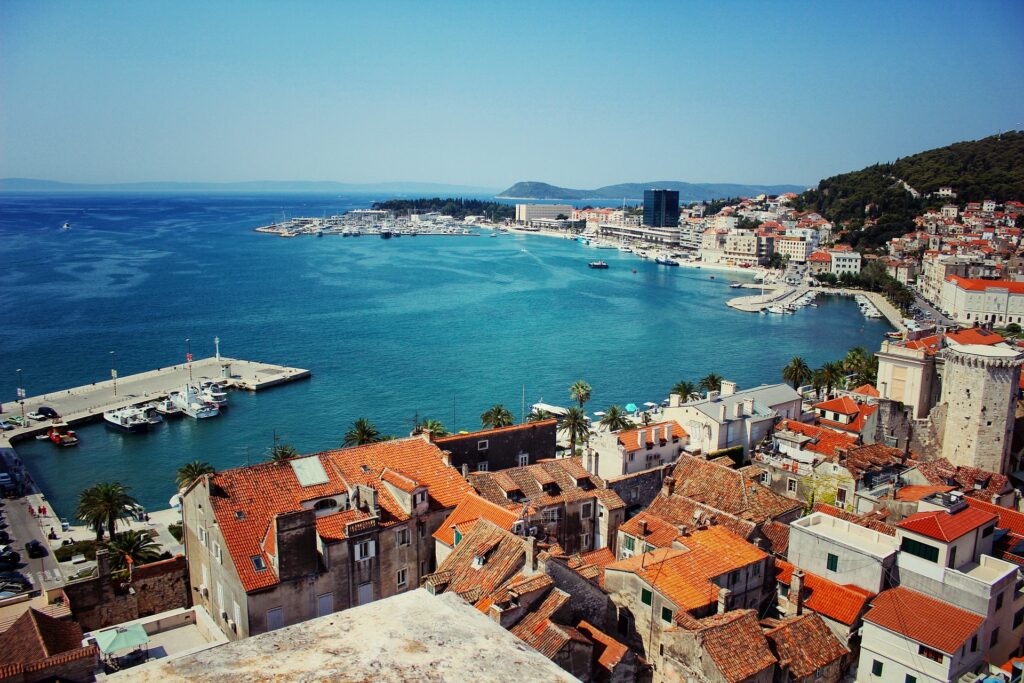
Having a multilingual website opens doors to a global audience. By translating your WordPress site into multiple languages, you can engage with visitors who prefer content in their native tongue, enhancing their user experience. This not only boosts your site’s accessibility but also increases your potential market reach, leading to higher traffic, better engagement rates, and ultimately, more conversions.
Introduction to Multilingual Websites and Croatian Language
Importance of Translation to Croatian
Translating your website to Croatian taps into a unique and valuable audience. Croatia is a growing market with a significant number of internet users who prefer browsing in their native language. Providing content in Croatian can set you apart from competitors who only offer content in more widely spoken languages, demonstrating a commitment to serving all potential customers. This can foster greater trust and loyalty among Croatian-speaking visitors, encouraging repeat visits and interactions.
Boosting SEO and Visibility
A Croatian version of your site can enhance your SEO performance in the region. Search engines prioritize localized content, so having a Croatian-translated site means better search rankings for relevant queries within Croatia and other Croatian-speaking areas. This localized SEO effort can significantly improve your visibility and drive organic traffic from a region you might otherwise miss out on.
Expanding Business Opportunities
Multilingual websites, particularly those translated into less common languages like Croatian, can unlock new business opportunities. Croatia’s strategic location in Europe makes it an ideal entry point for expanding your business into the European Union. By translating your site into Croatian, you can more effectively reach Croatian businesses and consumers, facilitating smoother communication and potential partnerships.
Enhancing User Experience
Translation into Croatian ensures that Croatian-speaking visitors feel more comfortable and valued. When users can navigate and understand your website in their preferred language, they are more likely to stay longer, explore more pages, and engage with your content. This positive user experience can lead to higher customer satisfaction and brand loyalty.
Investing in translating your WordPress site to Croatian offers numerous benefits. From reaching a broader audience and improving SEO to creating a better user experience and unlocking new business opportunities, the advantages are clear.
Adding Croatian language to your multilingual WordPress website can be a strategic move to achieve sustained growth.
Croatian Language
Basic Information about Croatian Language
Croatian is a South Slavic language spoken primarily in Croatia. It is one of the official languages of the European Union and has around 5.5 million speakers worldwide. Croatian uses the Latin alphabet, which makes it relatively easier for people familiar with other Latin-based languages to learn and understand.

History of Croatian Language
The history of the Croatian language dates back to the early medieval period. It developed from the Old Slavic language, evolving through the centuries with influences from Latin, German, Italian, and Turkish due to various historical events and occupations. The first known written document in Croatian dates back to the 11th century, with the language continuing to develop into its modern form throughout the centuries.
Learning, Speaking, and Understanding Croatian
Croatian is considered a moderately difficult language to learn for non-Slavic speakers. It has a rich phonetic system with a variety of vowel and consonant sounds, making pronunciation a bit challenging for beginners. However, the grammar rules are consistent and logical, which can make learning easier with practice and dedication. Speaking and understanding Croatian can be facilitated by engaging with native speakers and using language learning tools and apps.
Structure of Croatian
The structure of Croatian is highly inflected, with a complex system of declensions and conjugations. Nouns, pronouns, and adjectives change their forms based on gender, number, and case, which can be daunting for learners initially. Verbs are conjugated according to tense, mood, and aspect, with a clear distinction between perfective and imperfective aspects.
Vocabulary of Croatian
Croatian vocabulary is rich and diverse, with many words borrowed from other languages due to historical influences. There are numerous cognates with other Slavic languages, which can be a helpful bridge for speakers of those languages. Additionally, Croatian has many unique idiomatic expressions that reflect its cultural heritage.
Grammar of Croatian
Croatian grammar is intricate but follows a logical structure. The language has seven cases (nominative, genitive, dative, accusative, vocative, locative, and instrumental) that dictate the role of nouns and pronouns in sentences. Verb tenses include past, present, and future, with aspectual pairs that indicate the nature of the action. Mastery of these grammatical rules is essential for fluency in Croatian.
Ease of Learning Croatian
While learning Croatian can be challenging, it is certainly achievable with the right resources and dedication. Many language learners find success through immersive experiences, such as engaging with native speakers, consuming Croatian media, and practicing regularly. Online courses and language apps also provide structured learning paths to help learners progress effectively.
Understanding the Croatian language requires an appreciation of its historical roots, grammatical structure, and rich vocabulary. Despite its complexities, learning Croatian opens up a world of cultural and communicative opportunities, making it a worthwhile endeavor for anyone interested in the region.
Croatian-speaking People
Population That Speaks Croatian
Croatian is spoken by approximately 5.5 million people worldwide. The majority of these speakers are in Croatia, where it is the official language. Additionally, there are significant Croatian-speaking communities in neighboring countries and in diaspora communities around the world.

Croatian-speaking Countries
Croatia is the primary country where Croatian is the official language. It serves as the primary means of communication in government, media, education, and daily life. The language unifies the population and is a key part of national identity.
Countries Where Croatian is an Official Language
Besides Croatia, Croatian is also an official language in Bosnia and Herzegovina. In Bosnia and Herzegovina, Croatian is one of three official languages, alongside Bosnian and Serbian. It is predominantly spoken in regions with a substantial Croatian ethnic population.
Countries With Croatian-speaking Communities
Croatian-speaking communities can be found in several countries due to historical migration patterns. Significant Croatian communities exist in the United States, Canada, Germany, Australia, and South America, particularly in Argentina and Chile. These diaspora communities maintain their linguistic and cultural heritage, often through Croatian language schools and cultural organizations.
Croatian in Croatia
In Croatia, the language is a vital part of everyday life and cultural expression. It is used in all forms of communication, from casual conversation to official documents and media. Croatian literature, music, and cinema also play a crucial role in preserving and promoting the language.
Croatian in Bosnia and Herzegovina
In Bosnia and Herzegovina, Croatian is one of the key languages, especially in areas with a high concentration of ethnic Croats. The language is used in education, media, and local government, ensuring that the Croatian-speaking population can access services and information in their native language.
Croatian Diaspora
The Croatian diaspora has significantly contributed to the spread of the language worldwide. Emigrants from Croatia have established vibrant communities that continue to use Croatian in their daily lives. These communities often support language retention through cultural associations, churches, and media outlets that broadcast in Croatian.
Croatian Language Education
Croatian language education is available both in Croatia and internationally. In Croatia, it is a mandatory subject in schools, ensuring that every student attains proficiency. For the diaspora, many communities offer language classes to help younger generations learn Croatian and stay connected to their heritage.
Croatian is a language with a robust presence both in its home country and among global communities. Its speakers span across continents, maintaining their linguistic traditions and cultural practices. Understanding the distribution and importance of Croatian-speaking populations highlights the value of translating content into Croatian for reaching and engaging with these diverse communities.
5 Reasons a Multi-Language Website is Beneficial for your Business
Croatian on the Internet
Widespread Use of Croatian Online
Croatian is increasingly visible on the Internet, reflecting its importance in the digital age. Websites, social media platforms, and online content are growing in Croatian, which helps speakers access information and services in their native language. This presence is crucial for businesses and organizations aiming to reach Croatian-speaking audiences effectively.

Importance of Having a Croatian Version of Your Website
Creating a Croatian version of your website can significantly enhance your online reach and engagement. For businesses targeting the Croatian market, having a site in Croatian makes it easier for local users to navigate and interact with your content. This not only improves user experience but also builds trust and credibility among Croatian-speaking visitors.
Enhancing User Experience
A website in Croatian ensures that Croatian-speaking users can access and understand your content fully. When users find information in their native language, they are more likely to engage with your site, stay longer, and convert. This can lead to higher satisfaction and increased customer loyalty, as users feel valued and catered to.
SEO Benefits
Translating your website into Croatian can boost your SEO performance in Croatian-speaking regions. Search engines prioritize content that matches user queries in their language, so having a Croatian version of your site can improve your search engine rankings for relevant keywords. This localized SEO approach helps drive organic traffic from Croatian-speaking audiences, enhancing your site’s visibility.
Competitive Advantage
Offering a Croatian version of your website can give you a competitive edge in the Croatian market. Many companies may not provide content in Croatian, so by doing so, you differentiate yourself and attract users who prefer or require content in their native language. This can be a decisive factor for users when choosing between different service providers or products.
Reaching the Diaspora
A Croatian version of your site can also connect with the Croatian diaspora. Croats living abroad often seek information and services related to their home country. By providing content in Croatian, you make it easier for these individuals to stay informed and engaged with developments in Croatia, thus expanding your reach beyond the national borders.
Legal and Regulatory Compliance
In some cases, having a Croatian version of your website may be necessary for legal and regulatory compliance. Businesses operating in Croatia or dealing with Croatian customers might be required to provide information in Croatian to meet local regulations and standards. Ensuring compliance helps avoid legal issues and fosters a positive relationship with local authorities and customers.
Having a Croatian version of your website is essential for maximizing your online impact in Croatian-speaking regions. From improving user experience and SEO to gaining a competitive advantage and reaching the diaspora, the benefits are substantial. Investing in Croatian translation can help you effectively engage with this important audience and enhance your overall digital presence.
Multilingual SEO: 5 Best Practices to Remember
How to Translate a WordPress Site to Croatian
Major Ways of Translating WordPress Sites
There are several methods available for translating a WordPress site into Croatian. Each approach has its advantages and drawbacks, depending on your needs, resources, and desired level of translation quality. Common methods include manual translation, using professional translation services, or employing automated translation plugins.

Manual Translation
Manual translation involves translating each piece of content individually. This method ensures high accuracy and contextual relevance since a human translator can adapt content to cultural nuances. However, it can be time-consuming and costly, especially for larger websites with extensive content.
Professional Translation Services
Professional translation services offer a balance between quality and efficiency. These services involve expert translators who handle the translation of your site’s content, often providing a higher level of accuracy than automated tools. While more expensive than automated methods, professional services are ideal for businesses requiring precise and culturally appropriate translations.
Automated Translation Plugins
Automated translation plugins offer a quick and cost-effective way to translate your WordPress site. These plugins use machine translation to automatically convert content into different languages, including Croatian. While this method is faster and less expensive than manual translation, it may not always provide the most accurate or contextually appropriate results.
Autoglot WordPress Translation Plugin
The Autoglot WordPress translation plugin is a highly recommended tool for translating your site into Croatian. This plugin leverages advanced machine translation technology to automatically translate your website’s content. Autoglot offers a user-friendly interface and seamless integration with WordPress, making it an excellent choice for those looking to streamline the translation process.
Benefits of Using Autoglot
Autoglot provides several benefits, including ease of use, speed, and affordability. The plugin automatically translates your content into Croatian without requiring manual input, saving you significant time and effort. Additionally, Autoglot’s translations are continually updated and improved, ensuring that your site remains current and relevant.
Integration with WordPress
Autoglot integrates smoothly with WordPress, allowing for a hassle-free translation process. Once installed, the plugin can be configured to translate your site’s pages, posts, and other content types. It also provides options for reviewing and editing translations, ensuring that the final output meets your quality standards.
Choosing the right method for translating your WordPress site to Croatian depends on your specific needs and resources. While manual translation and professional services offer high accuracy, automated translation plugins like Autoglot provide a more efficient and cost-effective solution. Autoglot stands out as a valuable tool for those seeking to translate their site quickly and easily while maintaining quality and functionality.
How to Translate WordPress Blog
Step-by-Step Guide to Translating a WordPress Site to Croatian
Step 1. Installing and Activating the Autoglot Plugin
- To begin, you need to install the Autoglot WordPress translation plugin.
- First, log in to your WordPress dashboard and navigate to the “Plugins” section.
- Click on “Add New” and search for “Autoglot” in the plugin search bar.
- Once you find the plugin, click “Install Now” and then activate it by clicking the “Activate” button.
You may also download Autoglot directly from the official WordPress plugins repository.
Official Autoglot WordPress Repository
Step 2. Registering in the Autoglot Control Panel
- After activation, you must register for an Autoglot account to use the plugin.
- Go to the Autoglot settings page in your WordPress dashboard.
- You will see an option to create a new account or log in if you already have one.
- Follow the prompts to register, and once registered, you will receive an API key for linking your WordPress site with Autoglot.
Autoglot Control Panel lets you control your translation expenses, track usage and order new translation packages.
Autoglot Control Panel
Step 3. Configuring the Plugin
- With your account set up, proceed to configure the Autoglot plugin.
- In the plugin settings, enter your API key to connect your WordPress site to Autoglot’s translation services.
- You can adjust various settings, such as language switcher and widgets.
Step 4. Choosing Croatian Among Languages
- Select Croatian as the target language for translation.
- In the plugin configuration settings, locate the language options and choose Croatian from the list.
- This ensures that Autoglot will automatically translate your site’s content into Croatian, aligning with your localization goals.
Step 5. Translating Your Site’s Content
- Once Croatian is selected, the plugin will begin translating your site’s content.
- Autoglot will automatically process your pages, posts, and other content types, converting them into Croatian.
- This process may take some time, depending on the size of your website and the amount of content being translated.
There are various methods for translating WordPress websites, and automatic may be the most suitable.
How To Automatically Translate WordPress Website?
Step 6. Reviewing and Editing Translations
- After the automatic translation is complete, review the translated content to ensure quality.
- Navigate to the Autoglot interface within your WordPress dashboard to access the translated pages.
- Check for any inaccuracies or areas that may require manual adjustment.
- You can edit translations directly within the plugin to ensure that they meet your quality standards.
The Autoglot plugin allows you to manually edit the translations directly within the WordPress editor.
How To Edit Translation in WordPress?
Step 7. Checking the Results
- Finally, review your site’s Croatian version to verify that all content is translated correctly.
- Visit your website and navigate through the translated pages to ensure that everything appears as expected.
- Look out for any formatting issues or translation errors that might need correction.
Using the Autoglot plugin simplifies the process of translating your WordPress site to Croatian. By following these steps—installing and activating the plugin, registering, configuring settings, selecting Croatian, and reviewing translations—you can efficiently localize your site. This approach ensures that your Croatian-speaking audience receives accurate and high-quality content, enhancing their experience on your site.
Conclusion
Challenges of Translating WordPress Sites to Croatian
Translating a WordPress site to Croatian can present several challenges. One common issue is ensuring that translations are accurate and contextually appropriate, as automated tools might not always capture cultural nuances. Additionally, maintaining consistent formatting and layout across different languages can be complex, requiring careful attention to detail.
Benefits of Translating WordPress Sites to Croatian
Despite these challenges, the benefits of translating your site to Croatian are significant. Offering content in Croatian allows you to reach a broader audience, improve user engagement, and enhance your site’s SEO performance in Croatian-speaking regions. It also demonstrates a commitment to serving diverse linguistic communities, which can foster greater customer loyalty and trust.
Autoglot WordPress Translation Plugin
The Autoglot WordPress translation plugin is an excellent tool for overcoming these challenges. Its automatic translation capabilities streamline the localization process, making it easier and more cost-effective to translate your site into Croatian. With its user-friendly interface and seamless integration with WordPress, Autoglot simplifies translation management and ensures that your content is accessible to Croatian-speaking users.
Summary
If you’re considering translating your WordPress site to Croatian, the Autoglot plugin is a great option to explore. It provides a fast and efficient way to localize your content while maintaining quality and accuracy. Don’t miss the opportunity to engage with Croatian-speaking audiences and expand your site’s reach—try Autoglot today and experience the benefits of a multilingual website.



